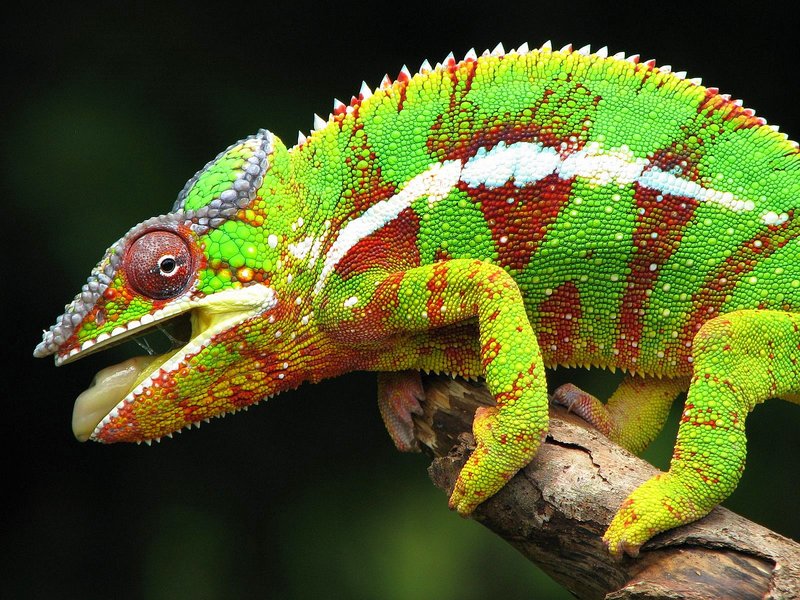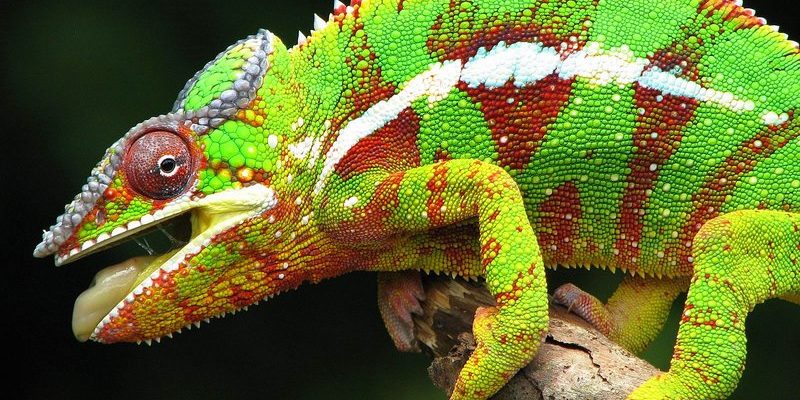
So, whether you’re a new chameleon parent or thinking about getting one, understanding the do’s and don’ts of handling these beautiful creatures is crucial. It’s not just about picking them up and putting them back down; it’s about building trust and keeping your little friend healthy and happy. Let’s explore the right ways to handle your panther chameleon, and some common pitfalls you’ll want to avoid.
Understanding the Panther Chameleon
Before we dive into how to properly handle your panther chameleon, it’s essential to understand a bit about them. Panther chameleons are native to Madagascar and are known for their incredible color-changing abilities. This can happen for various reasons, like temperature changes, mood shifts, or simply to camouflage themselves. Their size typically ranges from 12 to 20 inches, and they can live up to 5 to 7 years in captivity with the right care.
These reptiles are also solitary creatures. In the wild, they enjoy roaming around their territory, which means they can get stressed if handled improperly. When you think about it, they’re like introverts at a party—sometimes it’s best to give them their space! Understanding their natural behaviors helps create a better environment for them in your home.
Do: Create a Comfortable Environment
First things first—before you even think about handling your panther chameleon, make sure you have a comfortable and safe environment set up for them. This means having a spacious enclosure that mimics their natural habitat. Aim for a tall terrarium where they can climb and bask. Use branches, plants, and even some hiding spots to help them feel secure.
Temperature is also vital. Panther chameleons need a basking area with temperatures between 80°F to 90°F, and a cooler area around 70°F to 75°F. That way, they can regulate their body temperature as needed. Using a heat lamp is a great way to provide warmth. Here’s the thing: if they don’t feel comfortable in their home, they’re likely to be stressed when you try to handle them.
Don’t: Force Interactions
Now that the environment is set, let’s talk about handling. One of the biggest mistakes new chameleon owners make is forcing interactions. You might be excited to hold your new pet, but it’s crucial to remember that panther chameleons often dislike being picked up. This can lead to stress or even a defensive bite.
Instead of grabbing them, let them come to you. You can do this by gently offering your hand or placing a branch near them. If they move toward you, that’s great! If they look stressed or try to escape, back off. Building trust takes time. This isn’t a race, and your chameleon will appreciate your patience.
Do: Handle Them Gently and Calmly
When you’re ready to handle your chameleon, approach them slowly and calmly. Use both hands to support their body, making sure to keep their feet on a surface, like a branch or your arm. Here’s a little tip: chameleons can sometimes sense your energy, so if you’re nervous or quick in your movements, they might react the same way.
While handling, give them time to explore. They’ll likely want to move around, and that’s okay! Just be mindful of their surroundings. Make sure they’re safe from any pets or hazards. You can even create a little handling area, like a secure table where they can roam without the risk of falling or getting lost.
Don’t: Overlook Their Stress Signals
Being observant is key to a happy chameleon. They can’t vocalize discomfort like a dog or cat, so you need to pay attention to their body language. Signs of stress include puffing up their bodies, turning darker colors, or trying to escape by climbing. If you notice any of these signs, it’s best to put them back in their enclosure.
It’s also worth mentioning that some chameleons can hiss or open their mouths wide as a warning. This behavior is not a cute little habit; it’s a serious sign that they feel threatened. If you see this, take a step back and let them be. After all, it’s all about making them feel safe and secure.
Do: Keep Their Habitat Clean
Just like any pet, maintaining a clean environment is crucial for your chameleon’s health. This means regularly cleaning their enclosure and removing uneaten food. You should also provide fresh water daily and monitor humidity levels, as panther chameleons thrive in a humid environment of about 50-70%.
Investing in a good misting system can make life easier when it comes to keeping humidity levels up. Not only does it help with their hydration, but it also mimics the rain they’d experience in their natural habitat. A clean and well-maintained home will keep your chameleon feeling its best, which in turn makes handling them easier.
Don’t: Hold Them for Too Long
If you do handle your panther chameleon, remember that less is often more. It’s tempting to want to spend hours with your exotic pet, but chameleons can become overwhelmed if held for extended periods. Keep your handling sessions short—10 to 15 minutes is usually a good rule of thumb, especially in the beginning.
As they become more comfortable, you can gradually increase the time you spend together. Always watch for signs of stress, and if they seem agitated, it’s time to return them to their enclosure. Keep in mind that every chameleon is different, so it may take some time before yours is ready for longer handling sessions.
Do: Be Patient and Consistent
Patience is truly a virtue when it comes to handling panther chameleons. Building trust with your pet takes time and consistency. If you handle them daily, even for short periods, they’ll begin to associate your presence with safety and comfort. Over time, they’ll get to know you and may even become more affectionate.
You might also find it helpful to create a routine. For example, handle them at the same time each day. This predictability can help them feel more secure and ready for the interaction. Imagine your chameleon looking forward to your time together, just as you might look forward to coffee with a friend.
Don’t: Neglect Their Health Needs
Finally, it’s essential to stay on top of your chameleon’s health. Regular vet check-ups are a must. Keep an eye on their eating habits, shedding patterns, and overall behavior. If you notice anything unusual, such as lethargy or loss of appetite, it’s time to consult a vet specializing in reptiles.
Proper nutrition is also key. Feeding them a balanced diet of live insects, greens, and supplementation is vital for their well-being. If you’re unsure about their diet, a vet can provide guidance tailored to your chameleon’s specific needs. Your goal is to keep them healthy and happy, and a proactive approach will lead to a thriving pet.
In summary, handling a panther chameleon can be a rewarding experience when done right. By creating a safe environment, being patient, and respecting their boundaries, you’ll build a strong bond with your colorful companion. Remember, these lizards are unique, and understanding their needs will help you both enjoy your time together!

